Hey there, fellow wheat enthusiast! Are you ready to journey through the heartland of the Montana wheat industry?
In this article, we delve into the fascinating world of wheat production.
From the highest-quality durums and the hardest wheat varieties, we’ll unravel the secrets behind Montana’s wheat products.
We’ll also touch upon the culinary side of things. Picture mouthwatering Asian noodles and perfectly fluffy flatbreads – all thanks to the unique wheat varieties from this region.
- Related article: Montana’s Economic Profile
If the sound of that excites you, you’re in good hands.
We’re here to provide the most insightful and up-to-date information to help you make informed decisions as a wheat producer or simply satisfy your curiosity.
Ready to discover the allure of the wheat in the Montana industry? Let’s get started!
Montana Wheat: General Historical Overview
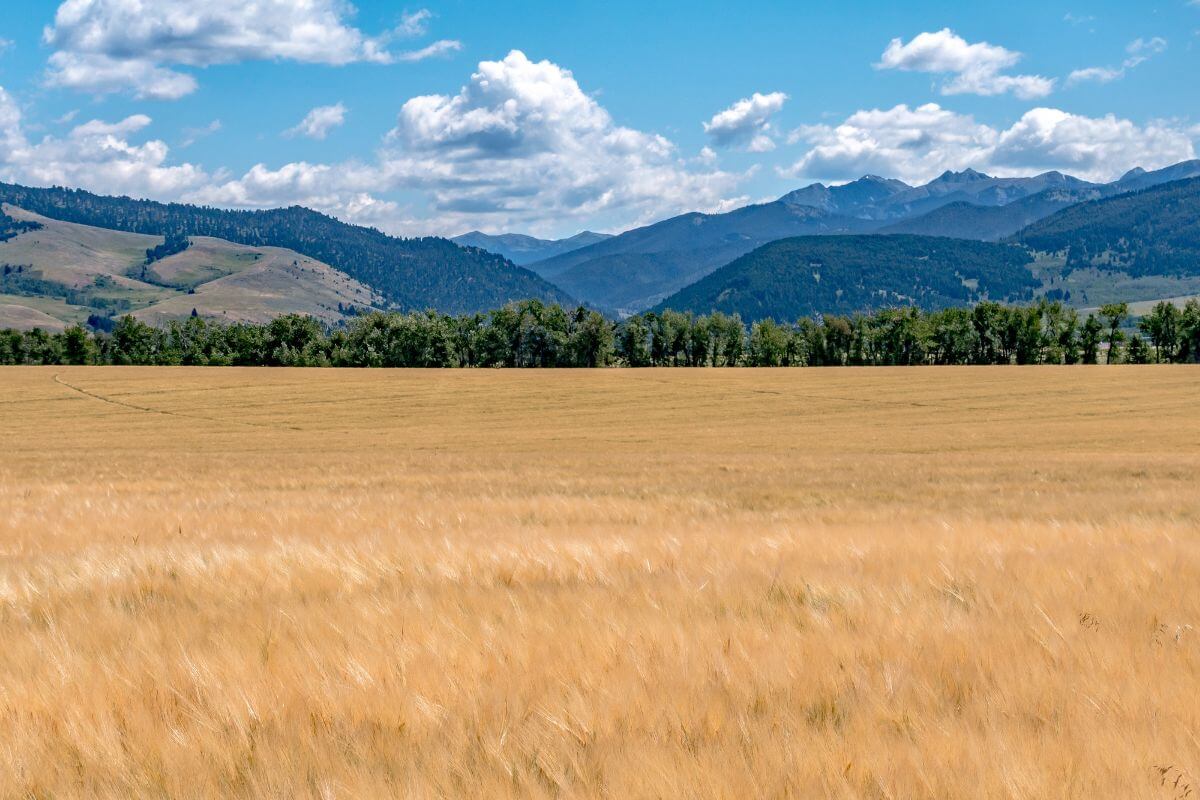
Montana’s journey into the world of wheat cultivation is a captivating tale of vision, resilience, and progress.
As the vast landscapes of this Northwestern state unfolded, so did the dreams of ambitious visionaries who recognized the immense potential of wheat in the region.
| Approx. Date | Event | Description |
| Mid-1800s | Introduction of Wheat to Montana | Visionaries like James J. Hill recognized the potential of wheat in Montana, leading to its introduction in the region. |
| 1860s | Revolutionizing Wheat Cultivation in Gallatin Valley | Sidney Edgerton pioneered wheat cultivation in the Gallatin Valley, setting an example of success and inspiring other farmers. |
| 1860s | Establishment of Grant-Kohrs Ranch | Conrad Kohrs established the renowned Grant-Kohrs Ranch near Deer Lodge, becoming a thriving hub for cattle and wheat production. |
| Late-1800s | Great Northern Railway | James J. Hill’s railway connected Montana’s wheat-growing regions to eastern markets, opening new opportunities for farmers and propelling the industry forward. |
| Late-1800s | N Bar Ranch in Montana and Charles M. Bair | Charles M. Bair’s N Bar Ranch near Martinsdale played a vital role in bolstering the state’s wheat industry through innovative techniques and investments in agricultural research. |
| 20th Century | Montana’s Flourishing Wheat Industry | Born from the pioneering spirits of audacious individuals, the Montana wheat industry has evolved and thrived, leaving an indelible mark on the state’s agricultural landscape. |
Today, the story endures with farmers who continue to sow the seeds of progress and contribute to the enduring tale of Montana’s wheat prosperity.
Montana Wheat Industry: Economic Significance
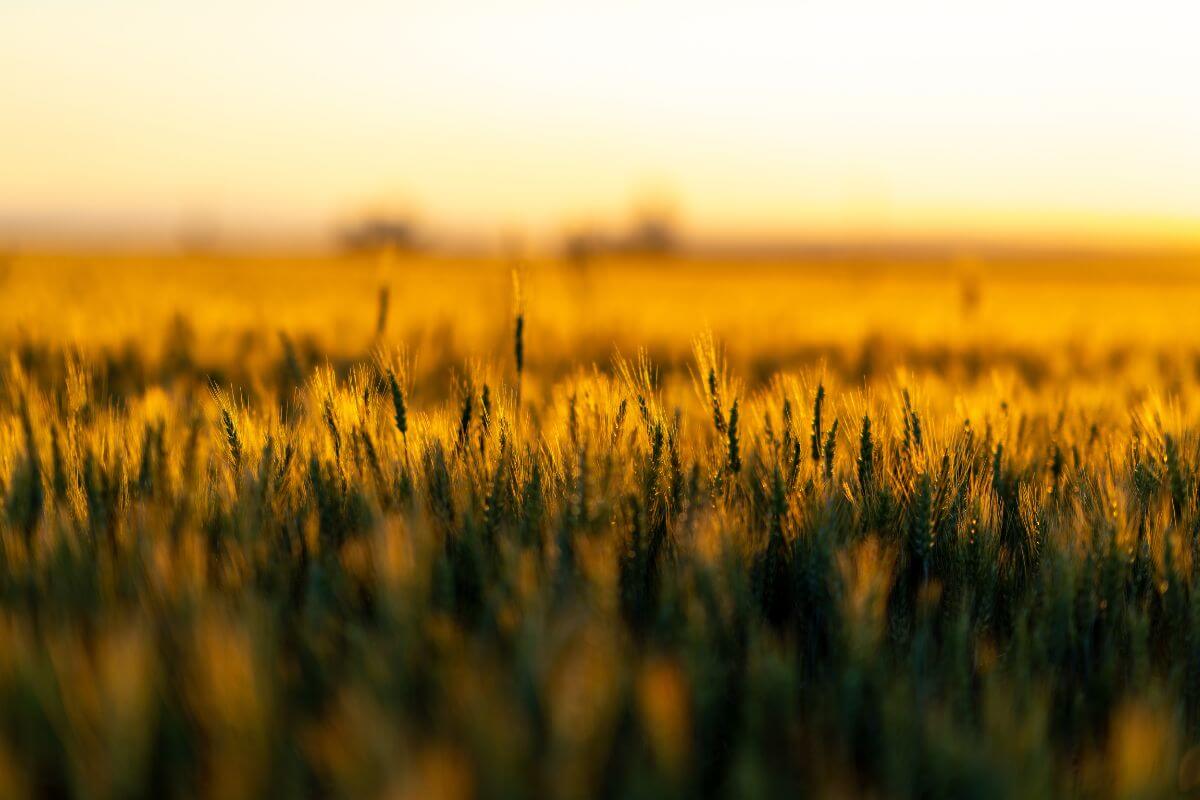
Montana’s wheat industry stands as a powerful economic force, contributing significantly to the state’s prosperity and earning it a prominent place among the nation’s top wheat producers.
The classes of wheat cultivated in the region, from Hard Red Winter to Durum Wheat, cater to various culinary needs.
Blessed with fertile soil, favorable climate conditions, and ample sunshine, Montana provides an ideal breeding ground for wheat production, resulting in not just quantity but exceptional quality as well.
Montana wheat is often celebrated for its high protein content, gluten strength, and superior baking performance, earning it the distinction of “improvement” wheat.
With a rich agricultural heritage and unwavering commitment to excellence, the state’s wheat industry continues to thrive, leaving a lasting impact on both the state’s economy and the global market.
The allure of Montana’s natural beauty may draw travelers like us, but its economic significance, embodied by its golden wheat fields, adds another layer of fascination to this captivating destination.
- Read more about Montana’s Main Products
Montana Wheat Farming: The Basics
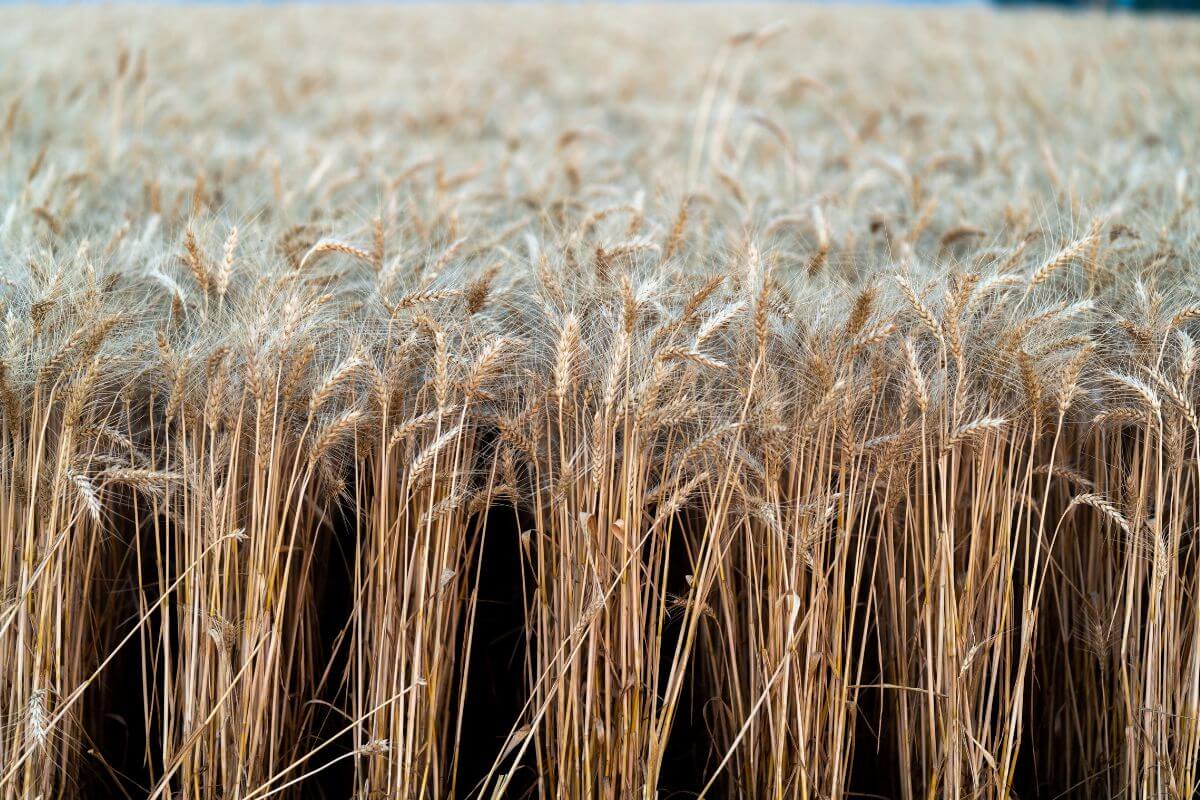
From the moment the seeds are sown in the fertile soil to the bountiful harvest that graces our tables, Montana wheat farming is a captivating symphony of nature’s blessings and hardworking hands.
So, let’s dig deeper into the basics of this flourishing industry and unravel the secrets behind Montana’s golden fields of wheat.
Montana Major Wheat Varieties
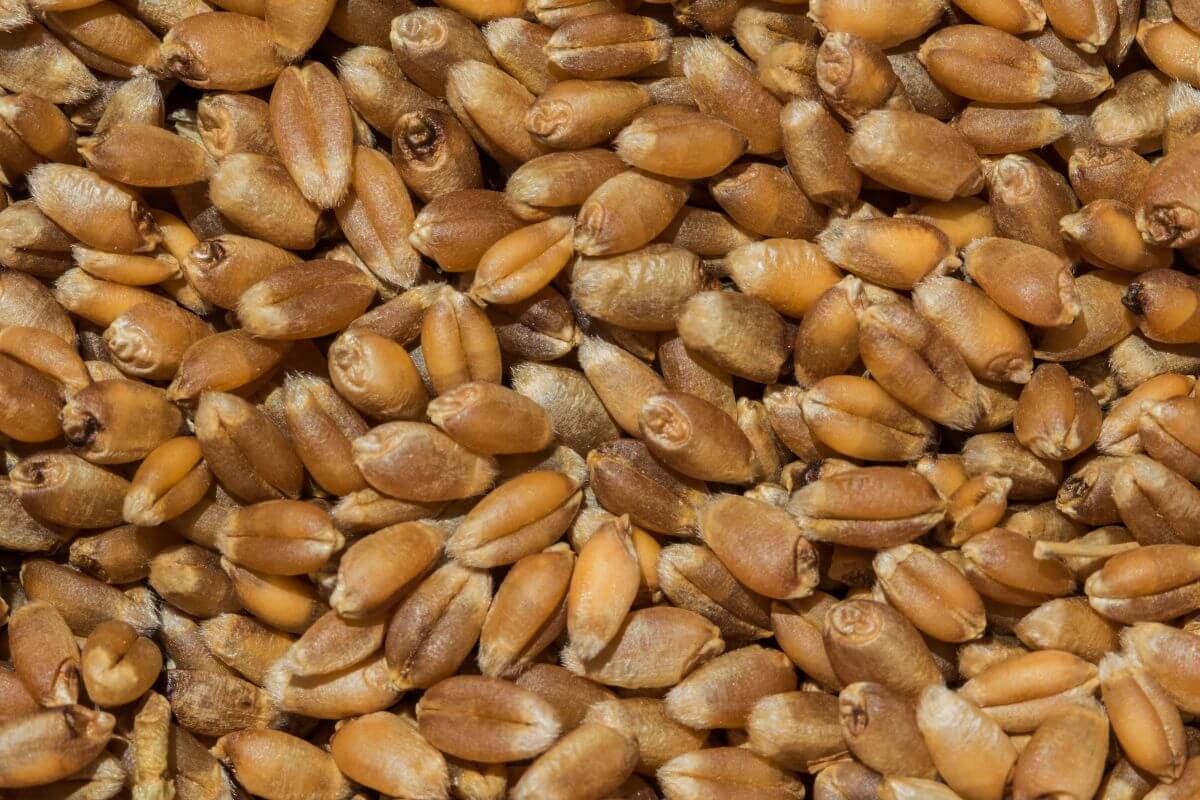
When it comes to wheat in Montana, there is a diverse array of major varieties that are grown across the state.
- Hard Red Winter Wheat – Robust with hard kernels, Hard Red Winter Wheat is ideal for milling into bread and general-purpose flour, and is appreciated by bakers and chefs for its high protein content.
- Hard Red Spring Wheat – Boasting slightly higher protein content than winter wheat, Hard Red Spring Wheat excels in making pasta and Asian noodles due to its elasticity.
- Soft Red Winter Wheat – Soft Red Winter Wheat is grown primarily in the eastern states. Its lower protein content and finer texture mean it is often used for cookies, cakes, and biscuits.
- Durum Wheat – Grown extensively in the Northern Plains, Durum Wheat is famous for its hard grain, protein structure, and high gluten content. It serves as a staple for pasta production.
With such a wide variety of wheat grown in Montana and across the United States, there is an abundance of options for agriculture producers and a wealth of choices for consumers.
Whether it’s pasta that ends up on supermarket shelves across the country or Asian noodles that get shipped all the way to South Korea, the wheat varieties from Montana offer unparalleled quality and versatility.
So the next time you’re in the mood to cook up some deliciousness, consider the unique qualities of Montana’s major wheat varieties and explore the creative possibilities they bring to your kitchen.
Montana Wheat Farming Process
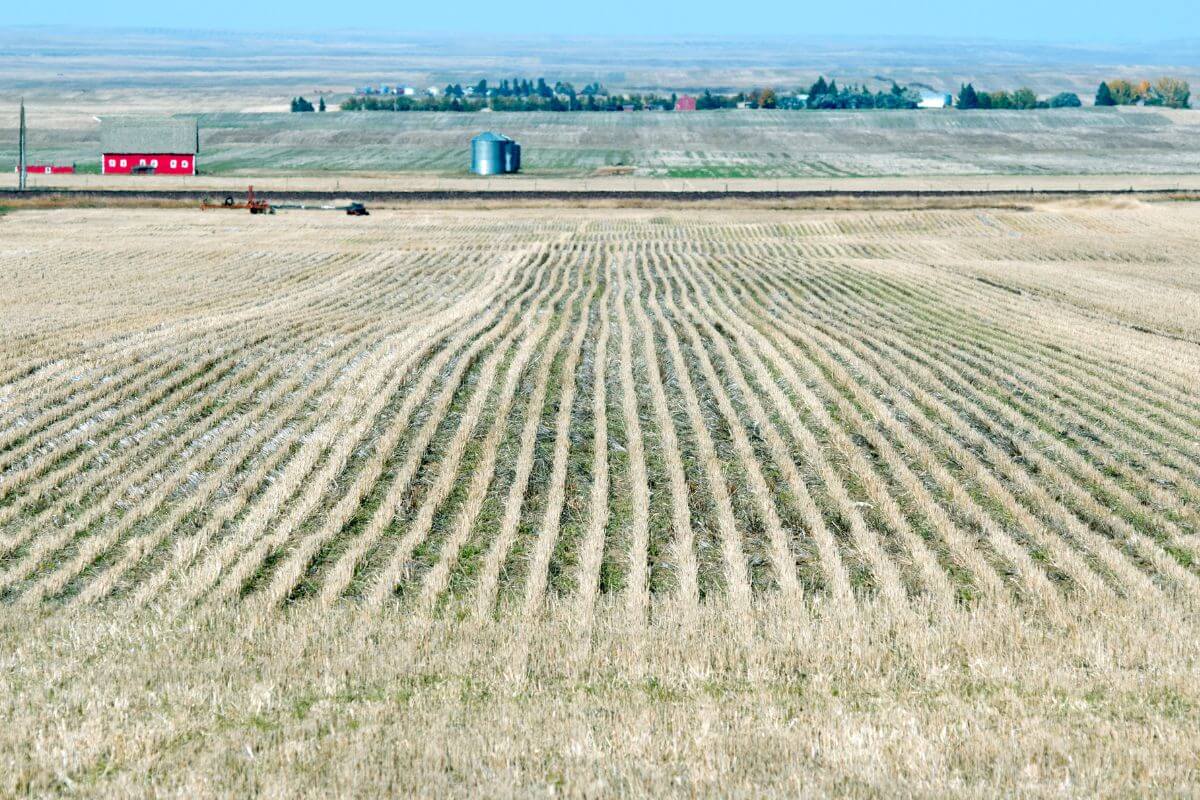
We reveal the key factors and meticulous practices that contribute to the success of wheat in Montana farming in this simple step-by-step process:
- Planting – Montana’s wheat farmers carefully select the appropriate time for planting, opting for spring wheat varieties for spring and winter wheat varieties for fall.
- Maintenance – Once planted, the wheat crops require diligent maintenance. This includes proper irrigation, precise fertilizer application, and effective pest management.
- Harvesting – Montana’s wheat farmers employ cutting-edge machinery and efficient techniques to ensure a smooth and timely harvest. They carefully gather and separate the wheat from the chaff.
- Transportation – Montana’s wheat farmers benefit from a well-established network of transportation infrastructure, facilitating the efficient transport of their crops from the fields to storage facilities or mills.
Montana’s farmers possess the expertise to ensure efficient wheat production, but they also recognize that certain factors are beyond their control.
These include unpredictable weather or market fluctuations, which may influence the ultimate success of farming.
Nevertheless, Montana’s wheat farmers continue to forge ahead, embracing the challenges with resilience and commitment.
Montana Wheat Farming Challenges
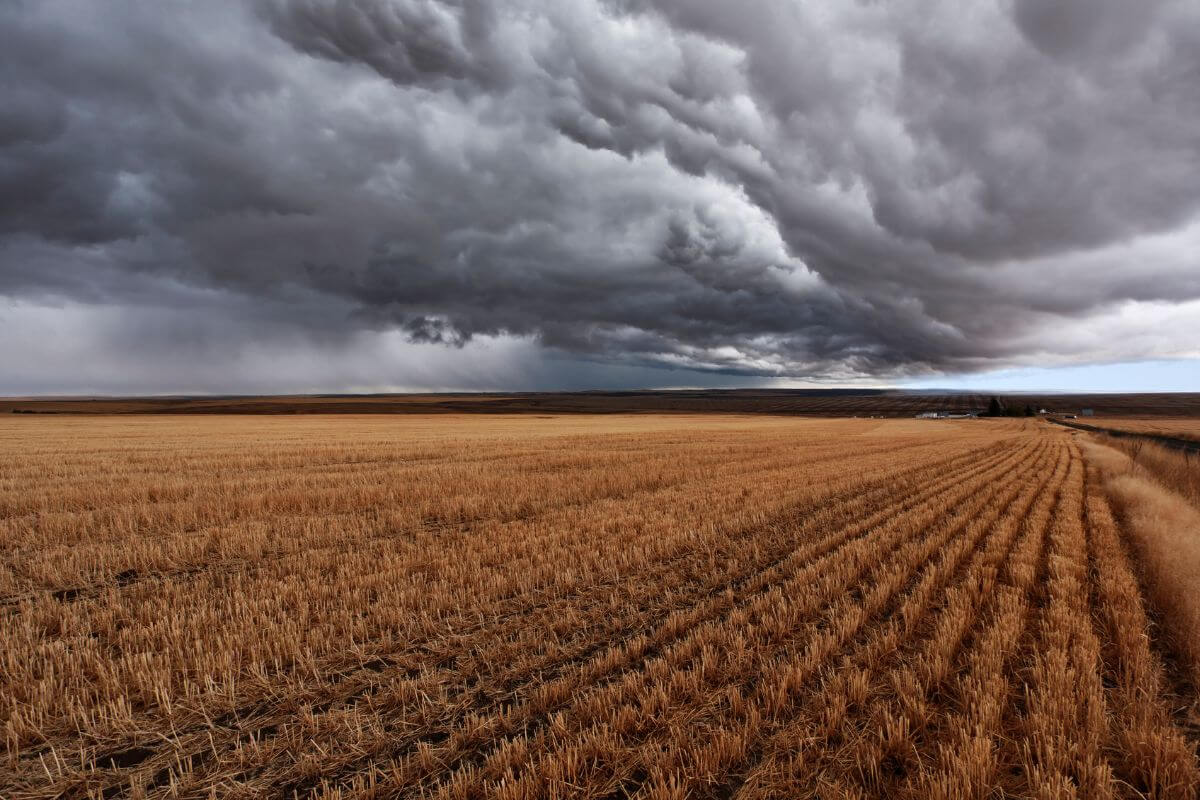
Unfortunately for our beloved Montana wheat farmers, growing quality wheat is not without its setbacks, as evidenced by these typical wheat farming challenges:
- Drought – Droughts threaten to parch precious wheat crops due to limited rainfall and scorching temperatures. Farmers must implement efficient irrigation techniques and innovative water conservation methods to ensure crop survival.
- Pests – Insects and diseases pose a constant threat to wheat fields, capable of decimating a crop in the blink of an eye. Montana wheat farmers arm themselves with knowledge and integrated pest management strategies.
- Financial Constraints – Fluctuating market prices and increasing input costs create financial challenges for dedicated farmers. To combat this, they seek government assistance programs and explore alternative income streams.
- Challenges of Implementing Sustainable Practices – Sustainability practices, like Precision Agriculture, help optimize resource efficiency and minimize environmental impact, but they are not easy to implement.
Despite the wheat farming challenges in Montana, wheat farmers persevere by utilizing their knowledge and implementing sustainable practices to weather the storms and enjoy a golden harvest.
Their unwavering determination inspires others to embrace the unknown and find strength in the face of adversity.
Montana Wheat Final Thoughts
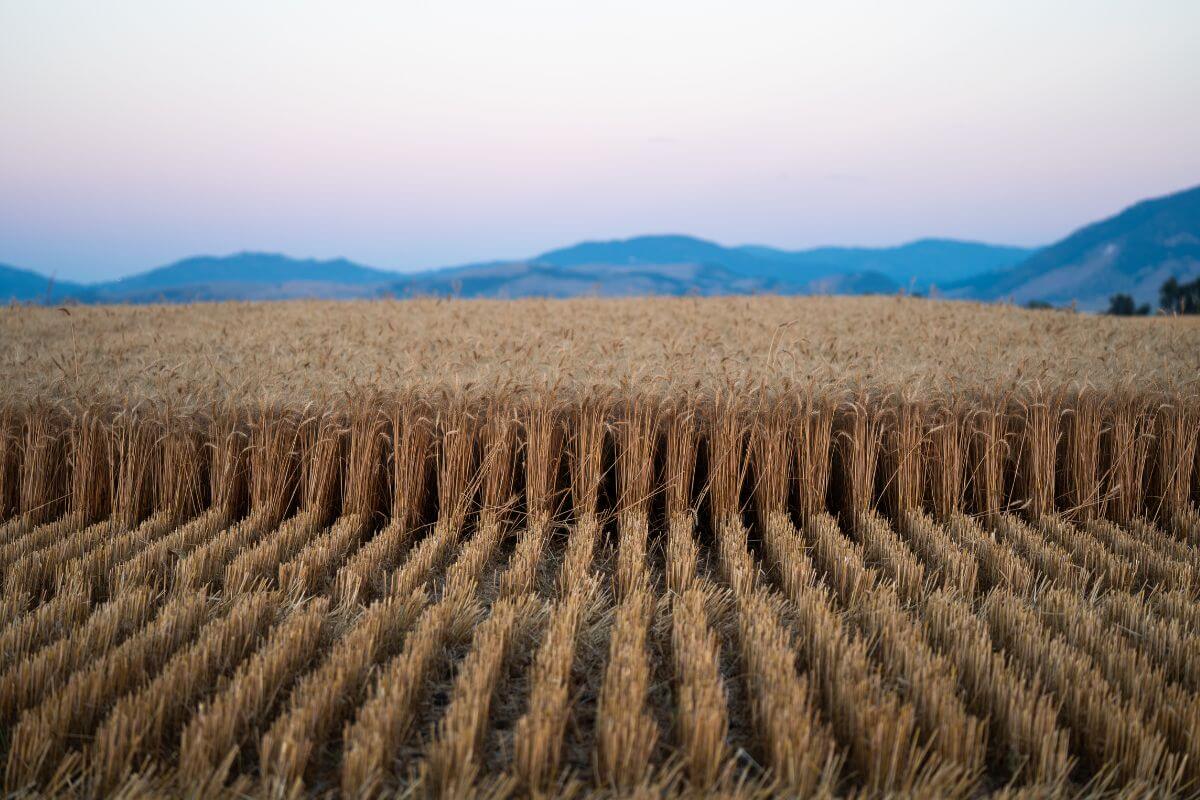
Montana’s wheat industry makes an impressive contribution to the state’s economy, despite facing numerous challenges.
Farmers grapple with constant pest and disease threats, intensified by the impact of climate change on weather patterns.
Nonetheless, Montana’s wheat industry remains a vital economic powerhouse, generating employment and income for countless individuals and communities.
To ensure its sustainability and growth, the industry must prioritize continuous research, technological advancements, and innovative farming practices.
Montana’s wheat farmers, resilient and determined, stand poised to lead the way toward a thriving and sustainable future.
Montana Wheat FAQs
1. How Much Wheat Is Grown in Montana?
Provided here is a forecast of Montana’s wheat production as of August 2022, sourced from the National Agricultural Statistics Office:
- Winter Wheat – 65.50 million bushels
- Durum Wheat- 23.33 million bushels
- Spring Wheat- 74.20 million bushels
On the whole, these figures suggest considerable wheat production for the state.
2. What Is Special About Montana Wheat?
Montana wheat stands out as a premier producer, known for its high-quality grains, exceptional protein content, and favorable baking qualities.
Nutrient-dense and celebrated for its distinctive flavor profile, Montana wheat guarantees culinary greatness that leaves taste buds tingling and chefs swooning.
3. How Do You Grow Wheat in Montana?
To grow wheat in Montana, farmers typically follow these steps:
- Prepare the soil.
- Plant the wheat seeds in the fall or spring, depending on the variety.
- Monitor the crop’s growth.
- Harvest the crops once they are ready.
4. Does Wheat Grow Well in Montana?
Montana’s wheat production thrives due to its favorable growing conditions, resulting in vast golden fields and making it one of the top wheat-producing states in the nation.
Its wheat is renowned for its exceptional quality, sought after for its superior baking properties, including its high protein content and gluten structure, making it ideal for creating delicious bread, pasta, and Asian noodles.
5. Why Is Montana Good for Farming?
Montana is suitable for farming due to its fertile soil, vast open land, and abundant water resources.
The state’s diverse climate allows for a variety of crops and livestock to thrive, while its low population density provides ample space for agricultural activities.
Additionally, Montana’s agricultural sector benefits from favorable government policies and support, making it an attractive region for farmers.
If you want to discover more of the wonders of Montana, dive into these awe-inspiring reads to uncover more of its secrets:
- Income Statistics for Montana
- Montana’s Vital Sectors
- Montana’s Finest Brands
- Oil From Montana
- Montana’s Tourism Financials
- https://apps.msuextension.org/publications/pub.html?sku=EB0197
- https://www.montana.edu/academics/sustainable-crop-production/
- https://www.nass.usda.gov/Statistics_by_State/Montana/Publications/News_Releases/2023/MT-Wheat-Varieties-2023.pdf
- https://www.montana.edu/extension/broadwater/blog-article.html?id=21379
- https://agr.mt.gov/_docs/aginclass-docs/MDAPublications/Montana_Student_Wheat_Ag_Mag.pdf

